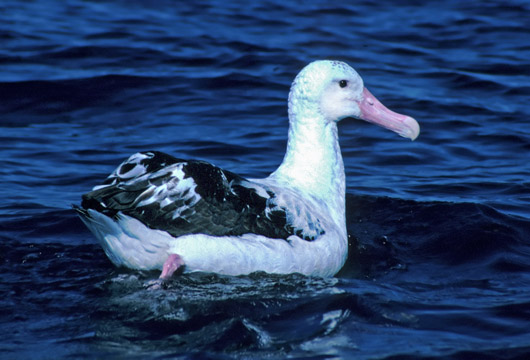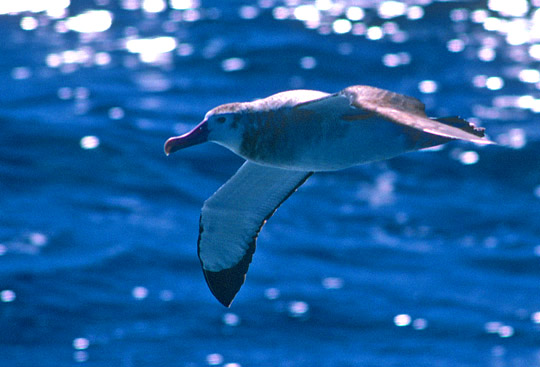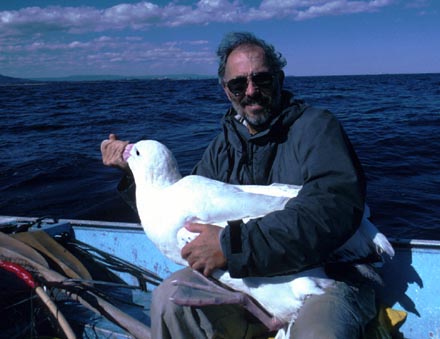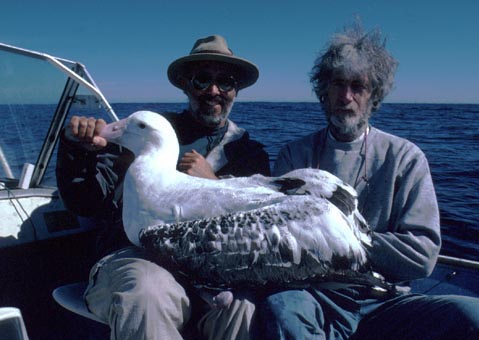 |
 |
|
|
|
|
The wandering albatross holds the honor of being the largest flying bird in terms of wingspan (maybe up to 3.5 meters in large males). It is not as heavy as some other large volant species (like swans or bustards) and is specialized for nearly effortless gliding on oceanic winds. Consequently, it does not fly at all well in calm weather. The birds above are adults, probably of the 'Gibson's' race (which may warrant full species status). They were resting off of Wollongong, Australia on a warm winter day. Several species of albatross congregate of the southeast coast of New South Wales to feed on dead and dying giant cuttlefish in the winter months. Wanderers are fairly tame to begin with and are quite approachable on calm days, especially after a good meal of cuttlefish weights them down a bit and makes them reluctant to attempt flight. Immediately below is a photo of a juvenile bird in flight, taken in the Drake Passage south of Cape Horn.
To give an idea of how big -- and how old -- these birds get, the two bottom images show captured wandering albatross. With appropriate research permits, we caught albatrosses from small boats using simple hoop nets, on calm days when they had trouble getting airborn; after reading the band and taking a few measurments -- and occasionally a few days in the lab for study -- they were released unharmed. It is quite an amazing experience to hold one of these huge but placid birds in your lap, especially when you consider how much they have traveled in their long lives. The white bird is an adult male, at least 50 years old: the photo was taken in 1999, and he had been banded as an adult in 1959, when he was at least 10 years old. The other bird is a younger adult, probably Gibson's albatross. The long-haired gentleman is Harry Battam, an albatross expert from the University of Wollongong who has been working with this population for many years. |
|
|
|




